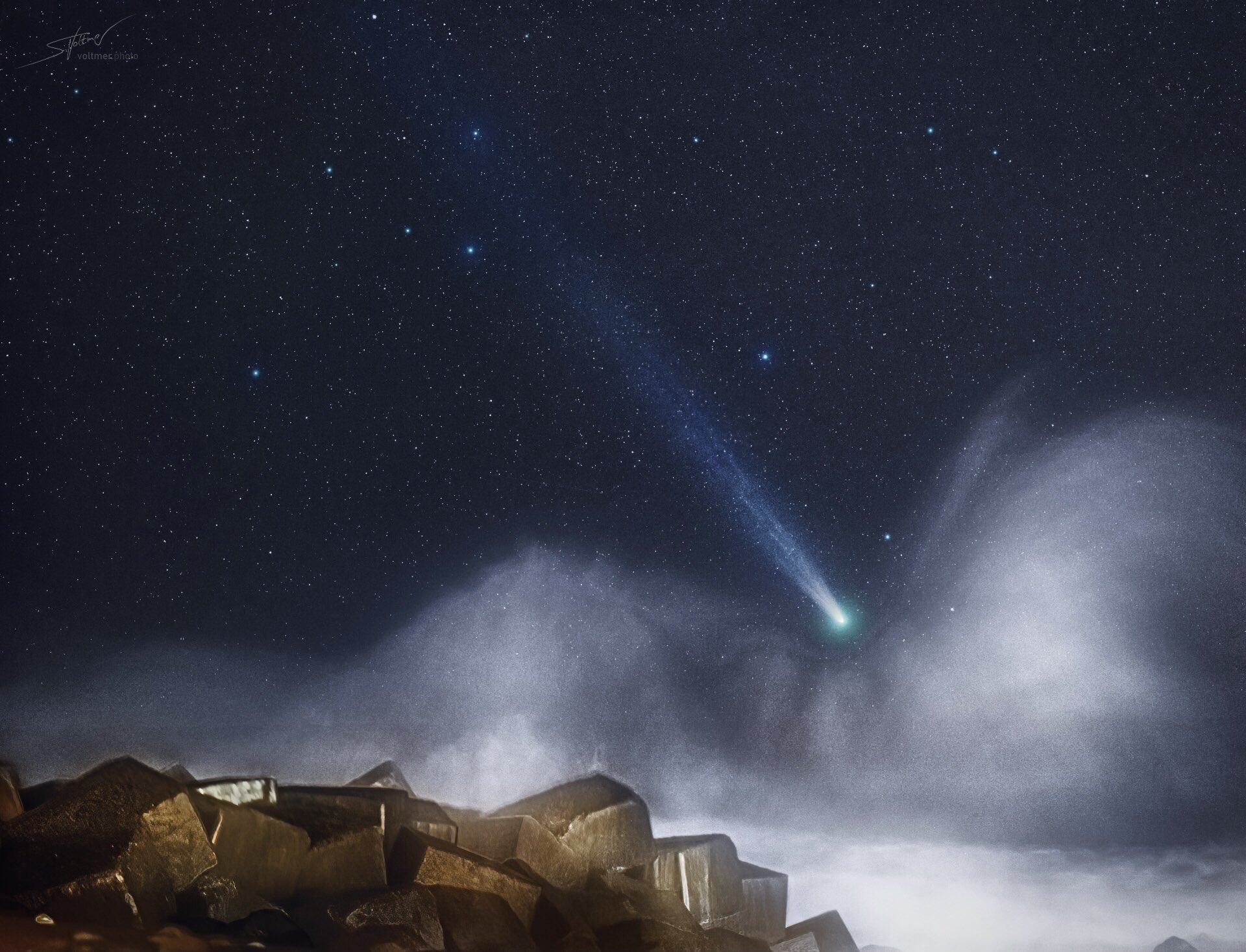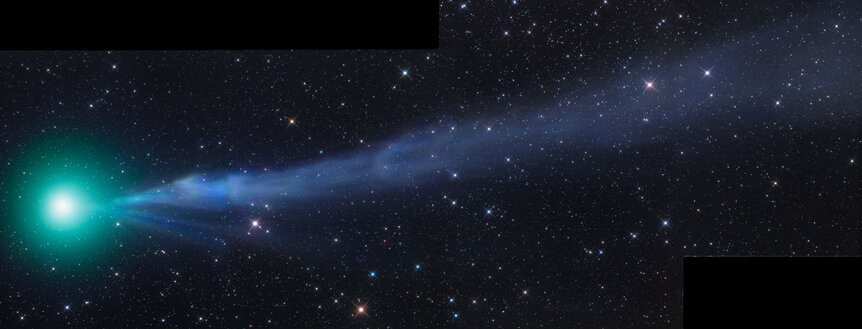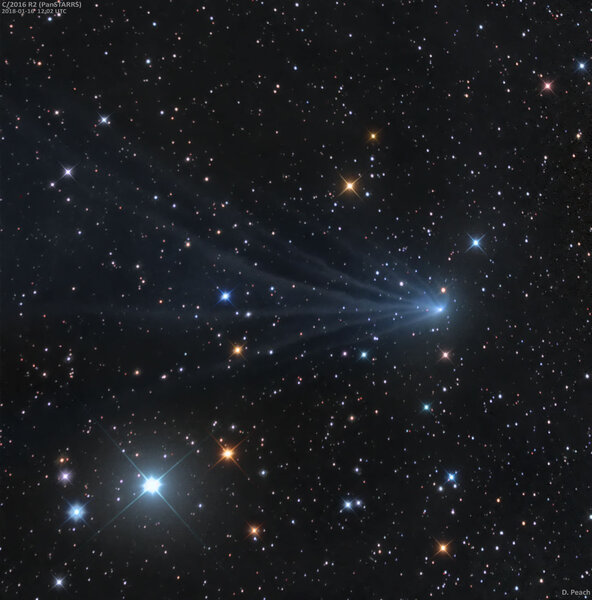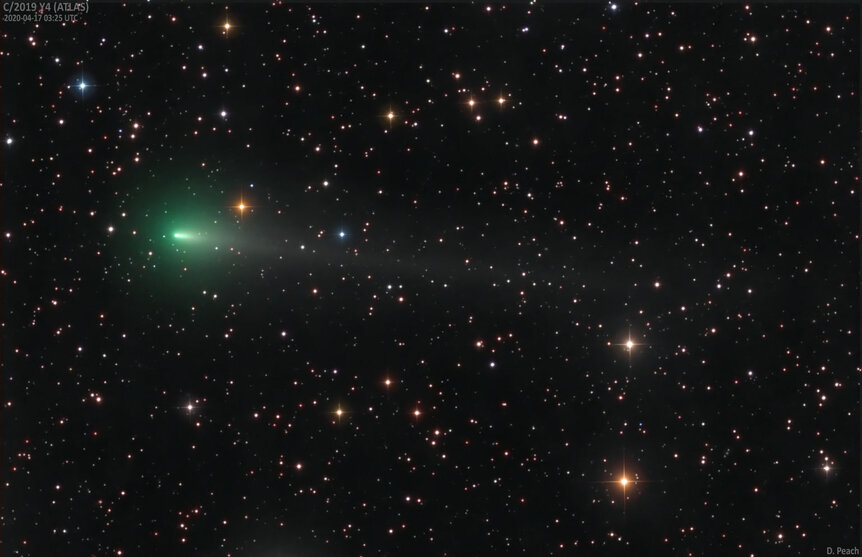Create a free profile to get unlimited access to exclusive videos, sweepstakes, and more!
If you're a comet, it's not easy being green. Now we know why.
Green color in comets is all in its head, not its tail.

It's not easy bein' green
It seems you blend in
With so many other ordinary things
And people tend to pass you over
Cause you're not standing out
Like flashy sparkles in the water
Or stars in the sky
— Kermit the Frog
I find myself both agreeing and disagreeing with my amphibious friend above.
I disagree with him in that if you were a green star you'd very much stand out, and astronomers would dedicate lifetimes to studying you; as far as we know stars cannot be intrinsically green, so finding one would be an amazing thing.
I also disagree with him in that comets are commonly green, but ones like that tend to be bright and beautiful and amazing, so again you'd stand out clearly.
But there's one thing he's mostly right about: It's not easy being green, even for a comet.
Comets are chunks of ice, rock, and dust that orbit the Sun. Most are on long, elliptical paths, some that reach far, far past Neptune's orbit. Out there it's so cold they stay frozen, changing only extremely slowly over the eons. But if it happens to drop close to the Sun, the ices turn directly into gas, and then the comet becomes a spectacle.
This process releases a lot of dust from a comet that was previously stuck in the ice. This gets blown back by the pressure of sunlight to create a long, reddish-yellow dust tail, which reflects sunlight. The gas, though, gets zapped by ultraviolet light from the Sun and glows, much in the same way a neon sign does. The molecules absorb the light and lose an electron or two. If an electron recombines with the molecule it emits light. This creates the ion tail.
The color of the ion tail depends on the molecule. Blue comes from carbon monoxide, for example. Many comets glow green, and this is known to come from the unusual molecule dicarbon (or C2), two carbon atoms bonded together.
But there's a mystery here. The green glow is seen from the head of the comet, the gases immediately surrounding the comet's solid nucleus. But the tail never glows green. Why not?
Astronomers assumed that the molecule gets broken up by UV sunlight, a process called photodissociation, so it's abundant near the comet's head but exposure to sunlight destroys it before it gets very far in the tail. This makes sense, but has never been proven in a lab. C2 is a very fragile molecule, very reactive, and if you try to make it in Earth's air it immediately grabs a bunch of oxygen atoms and combines with them. So photodissociation has never been shown conclusively to be why it's not seen in comet tails.
Until now. A group of researchers took on this task in a difficult experiment to see if the observational conclusions of astronomers was correct. Spoilers: They are!
They created C2 by zapping molecules of tetrachloroethylene (C2Cl4) — also used as dry cleaning fluid, because why not — with a laser. They then hit the C2 with another laser to blast it apart, and measured how much energy that took: They used a third laser to energize the molecules which then glowed, allowing them to measure the speed accurately, which in turn told them how much energy each bit had. All this together could then be used to figure out how much energy it takes to photodissociate C2.
This part is cool: With that in hand, they could calculate how long, on average, a molecule of C2 takes to break apart when hit by sunlight if a comet were at the same distance from the Sun as Earth (150 million kilometers). It's actually a very complicated multi-part process to do this, involving at least two photons of light from the Sun plus a couple of more steps where the molecule changes configuration, so it takes time to proceed. What they found is that on average it takes very roughly 160,000 seconds, or two days. That means a lot of the C2 is gone by the time it gets from 50–100,000 km from the comet.
That's not very far in terms of the length of a comet's tail, which can be millions of kilometers long! And that's why the comet heads are green but the tails aren't: The C2 breaks apart relatively close to the comet's head and never makes it to the tail.
These numbers match well with what astronomers observed almost a century ago, which is nice.
So now we know how this all works. Comets have lots of complex organic (carbon-based) molecules on their surfaces. When they get close to the Sun the UV light breaks those apart and makes C2. This gets lofted off the surface as ice turns to gas. The molecules get energized and glow their characteristic green color, but over the next day or two gets torn apart.
And this gives many comet heads their gorgeous green glow.
I'm always rather amused by the irony of nature. The same sunlight that creates C2 in the first place on the comet's surface is what ultimately destroys it in space as well. If there's some morality lesson there, feel free to explore it on your own.
And another lesson to take home from all this? Kermit was right. Or, at least, close enough. For comets, it's actually natural to be green. But it's complicated.






























